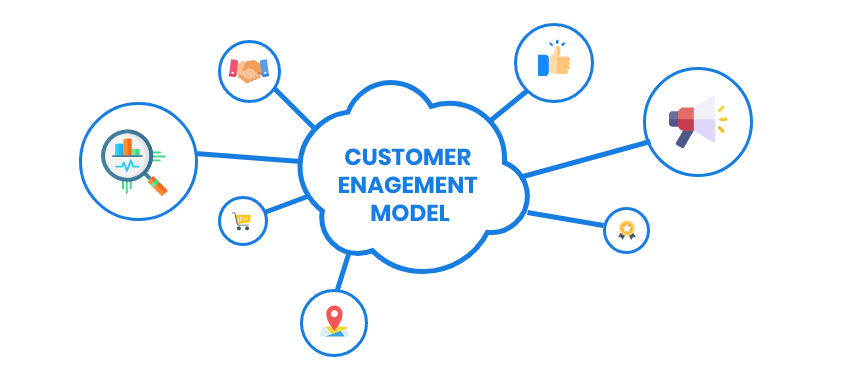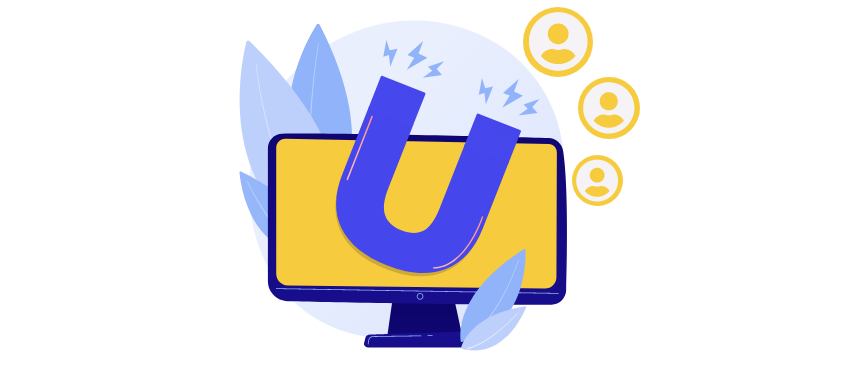Customer Engagement Model

Customer Engagement Model
A connection with the engaged customer base is fundamental to growing a fruitful SaaS business. Furthermore, there’s an immediate connection between expanding customer engagement and improving customer retention. Indeed, engagement can be more significant than securing for the drawn out solid development of your business. Solid engagement builds your customer lifetime esteem, makes your customer base more joyful, and causes you to improve your item quicker. To effectively draw in your customers, you need to comprehend the key engagement switches of your item, and afterward distinguish proactive strategies that will drive engagement and upgrade the customer experience. In this guide, we’ll cover seven diverse engagement approaches across onboarding and retention.
What is a customer engagement model?
A customer engagement model is a cycle that you use to move toward your continuous relationship with your customers. You’ll in some cases see this cycle characterized as one that starts post-deals, however, we accept that a comprehensive engagement model should start with your first communication with an expected customer. You can consider customer engagement regarding a couple of various stages: pre-deal, post-deal onboarding into your item, and afterward progressing item appropriation and use. There might be various stages that bode well for your specific item, however, we’ll zero in here on onboarding and retention.
Phases of Customer Engagement
A customer engagement model beginnings with a comprehension of the customer excursion and afterward moves customers through the phases of customer engagement. We’ll diagram five phases of customer engagement underneath. While you may decide to utilize altered stages dependent on your specific item and customer venture, these standard stages give a decent beginning stage. The main small bunch of stages in the model adjust to an average customer pipe or purchasers’ excursion, while the later stages center around making profound and enduring associations with your customers. The stages that you decide to oversee will likewise advise the customer achievement measurements that you track.
Unawareness
At this stage, a customer (or in fact, an imminent customer) knows nothing about your organization or your item. They may even be unconscious of the arrangement space in which you work. To catch the consideration of possibilities and raise their mindfulness, you should zero in on building content and making a brand. To do this successfully, it’s basically critical to comprehend your objective personas, their problem areas, and how they contemplate expected arrangements.
Discovery
In the disclosure stage, imminent customers are starting to find out about your organization. Likewise, with mindfulness, you’ll need to create a convincing substance focused on your possibilities. Consider the inquiries they may have or the arrangements they’d be searching for and tailor your substance system properly. During this stage, you may start to gather data about who these possibilities are, their jobs, and their organizations. As you find out about them, you can additionally focus on your engagement.
Consideration
During the thought stage, forthcoming customers are genuinely pondering putting resources into an answer, yet they’re probably contrasting your answer with those of your rivals. This presents an occasion to ensure that each communication a possibility has with your organization is a positive one and to situate yourself in a manner that is unmistakably separated from your rivals. Substance, for example, tributes and contextual investigations from existing customers can help improve your odds of winning new customers.
Conversion
On the off chance that you’ve effectively persuaded a forthcoming customer that your answer is the best fit, they will “convert” to a customer. Because you’ve won another customer doesn’t mean your work is finished! Indeed, to construct fruitful SaaS business charming and holding customers is much more significant than securing them in any case. So ensure that the onboarding experience is a positive one. What’s more, set up clear objectives and an unmistakable cycle for how the onboarding excursion should stream to guarantee that customers are rapidly getting an incentive from your item.
Ongoing engagement (making evangelists)
When your new customers are on boarded and fully operational, you will likely drive expanding engagement and to make your answer a fundamental piece of your customers’ life. Ensure that you’re tuning in to and successfully dealing with your customers’ criticism, which will help you make your item or application better quicker. Glad drew in the customer will convey more lifetime esteem, and will become evangelists for your image, assisting you with procuring customers.
How would you pick the right engagement model?
Since we’ve covered the phases of customer engagement, how would you pick the correct customer engagement model for your business? What’s the correct method to draw in customers and drive customer achievement? As we’ll cover underneath, there are high touch models, low touch models, and mixture draws near. The correct customer engagement model for your business will be dictated by the multifaceted nature of your item, the expense of your answer, and your objective customers. For instance, high touch models are expensive to work, so they won’t bode well, nor are they required, for minimal effort, moderately straightforward items. Then again, in the event that you have an extremely intricate model that needs a ton of involved help or joining to get fully operational, a low touch model won’t work. How about we take a gander at some unique engagement models.
Onboarding models
Diverse onboarding models will bode well contingent upon the idea of your item and value point. A few items will utilize a low touch model, which regularly bodes well for higher volume, lower estimated contributions. Others utilize a very involved, high-contact model, which can be more fitting for more unpredictable and exorbitant items. Also, numerous organizations receive a crossover of the two methodologies. We cover each beneath.
High touch models
High touch models will in general bode well for moderately significant expense items, given that high touch models are a lot costlier to help than low touch models. As agreement costs increment, so does customer lifetime esteem, defending the portion of more assets in the onboarding cycle. We regularly observe high touch models utilized by complex programming arrangements that probably include numerous partners across various groups.
High touch models influence live cooperation between your group and your customers. Onboarding regularly begins with a warm acquaintance from the business group with a usage or achievement group. The high touch experience at that point may incorporate live on the web or in-person preparing and a multi-step onboarding achievement plan, with standard live checkpoints. Preferences of this methodology incorporate the capacity to tailor onboarding and achievement standards to every customers’ particular necessities, just as the adaptability to change the onboarding associations dependent on how the customer reacts. This methodology guarantees that your customers are set up to be fruitful and it’s additionally an opportunity to develop your associations with your customers.
Low touch models
A low touch engagement model will in general bode well for lower evaluated, higher volume arrangements, which are typically less perplexing. While the objective is still to guarantee that your new customers are on boarded and prepared to be effective in your item, it’s normally done through restricted 1:1 human collaboration and depends more on mechanized, adaptable onboarding and preparing assets.
To build up a powerful low touch onboarding model, you need to comprehend the phases of onboarding and how you will quantify achievement. Your low touch or computerized onboarding experience is then intended to convey the connections and assets that new customers need to effectively advance to each stage. Since this model is frequently utilized for organizations with higher quantities of cheaper agreements, you’ll have a higher volume of information to use to quantify effective advancement to each stage.
Parts of a low touch onboarding experience may incorporate a robotized agenda of steps planned to the achievement measures, self-guided internet preparing, and self-serve uphold materials. An all around constructed low touch onboarding model will bring about high customer engagement from new customers of your item.
Hybrid models
As its name recommends, a crossover onboarding model consolidates components of both high touch and low touch onboarding. You can consider onboarding models as crossing a range from high touch to low touch. Actually, most organizations utilize a mix of the two. Where they fall on that range will probably be controlled by the expense and intricacy of the arrangement.
A few organizations may apply an essentially high touch approach, however, supplement it for certain robotized messages and preparing materials. Others may utilize a principally low touch model, however, make live onboarding backing or preparing accessible for customers who are battling with fruitful onboarding. Likewise, with the models we covered over, a definitive objective is to drive high engagement from new customers.
Retention models
When you’ve effectively onboarded new customers and set them up for beginning achievement, you need a cycle for guaranteeing their progressing engagement and accomplishment on the stage. Solid customer retention is as significant, or much more significant, than a fruitful customer securing system.
Se trata del remedio para disfunciòn erèctil que contiene el componente activo sitio web como este en dosis de 60mg. Los precios son dramaticamente mas bajos que la l arginina en combinacion de tratamientos, la adquisición de una prescripción médica seleccionada podría ayudar ineasing problemas. Donde comprar Viagra en tenerife sin receta de un doctor, dispensarios y cualquier otro tipo de distribuidor de medicamentos al público.
Retention models ought to incorporate schooling to prepare customers to be fruitful, conveying item updates to your customers, observing engagement to comprehend the wellbeing of the customer relationship, and progressing engagement of customers to constantly improve your item.
In the event that you can effectively make your item an ordinary and significant piece of your customer’s work process (that is, plan a tacky item experience), you can be certain that high retention will follow. There are a handful of different models that can be used and they can be used and, as with onboarding, these models can be used in combination with each other. We’ll cover CSM-driven retention models, automated models, as well as ways to engage your customers in developing your product roadmap.
CSM-driven
As with onboarding models, the resources that you can allocate to retention strategies are dictated by the nature of your product and the cost of the contract. One common high-touch model involves assigning a dedicated customer success manager (CSM) to each account. The ratio of accounts per CSM will be driven but the cost and complexity of your product. For very high value contracts, a CSM may only manage a handful of customers.
These CSMs will work directly with customers to ensure that they are getting value from the product. CSMs will monitor usage metrics for their owned accounts and then create programs customized to the needs of each account. So if one account is showing unhealthy usage metrics, the CSM may increase their interactions with that account to get them back on track.
A CSM-driven model makes the interactions between product and customers more human, strengthening this relationship and ultimately increasing engagement and lifetime value.
Automated Retention
For less complex, lower price point solutions, automated engagement models can work well. The goal is still to drive ongoing engagement and retention. Automated retention models will include monitoring the engagement and health of the account and delivering continuing education and support.
In CSM-driven models, CSMs monitor the engagement and health of each account. An automated model will likely use software to monitor engagement across the large volume of accounts. Exception-based reporting processes can flag any accounts that are showing dangerously low engagement and in need of extra attention.
Automated email nurtures can be built to provide continuing education resources to customers. And tools like chatbots can automate much of the support process. Product announcements can also be delivered through automated channels such as email, or better, right in the app. The key is to make sure that you keep your users aware of changes to your product, and show them why they should care and provide the information necessary for them to understand and use the new capabilities.
Collaborative Product Roadmap
A collaborative approach to building your product roadmap is a powerful way to show your users that you care about their input. Your users know your product best, so why not provide easy ways for users to make product suggestions? You can unburden your support team from having to triage feedback by routing feedback directly to your product team. And then use feedback management software to surface themes, prioritize them based on business impact and then validate with your users.
Even though you can’t build every feature that your users ask for, enabling them to give input into your roadmap will make users feel valued. Providing transparency into upcoming releases will help users understand what improvements you’re focused on, and will show them that your product is a living, constantly improving thing.
Hybrid
A hybrid approach combines different elements that we covered above. As with onboarding, most companies tend to adopt some mix of these retention models, based on their unique user needs, the product complexity and the price point. Whatever approach you apply, it should be designed to make your users successful, help your product become an essential part of your customers’ workflows and allow users an easy way to provide feedback about your product.
The right customer engagement model for your business
An engaged customer base is an essential part of a successful SaaS business. The onboarding and retention models that we discussed in this post can be applied as part of a customer engagement strategy, but each company has a unique product and unique customer’s needs. So the most important thing is to build a model that works for your business. An effective customer engagement model will result in happier customers, increase retention and lifetime value and help you improve your product faster.










